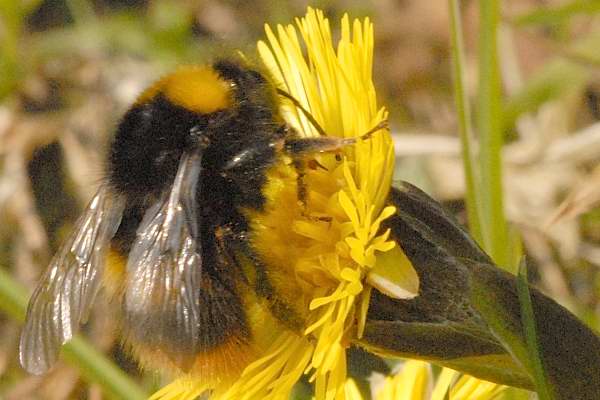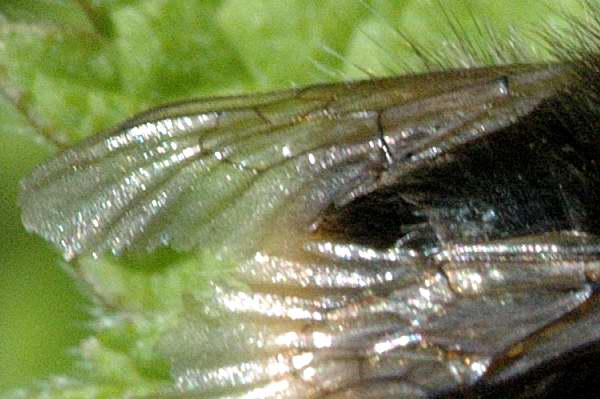
Worker |

Queen |

Male |
 |

Worker |

Queen |

Male |
 |
| Length | Queen | Worker | Male |
| Body | 15-17mm | 9-14mm | 11-13mm |
| Forewing | 13mm | 10mm | 10mm |
| Proboscis | 12-14.5mm | 8-12mm | 9-10mm |
| Egg | Larva | Pupa | Adult |
| ? | ? | ? | March - September (Earliest: 13.3) |
| Attractant Chemicals | |||||
|---|---|---|---|---|---|
| Monoterpenoids | Citronellol, Citronellyl, Dihydrofarnesal,
Dihydrofarnesol, Geraniol, Geranyl Acetate | ||||
| Sesquiterpenoids | Farnesol, Farnesyl Acetate | ||||
| Diterpenoids | Geranylgeraniol, Geranylgeranyl | ||||
| Phenolics | Hexadecanol | ||||
Atlas Hymenoptera: Bombus pratorum
Belgium,
Europe
BWARS:
Bombus pratorum
Bumblebee Pages:
Bombus pratorum
Nature Spot:
Early Bumblebee - Bombus pratorum
Dutch Bees and their Relations:
Bombus pratorum
Wildbienen:
Wiesenhummel: Bombus pratorum
Insektenbox:
Wiesenhummel
Pictures © 2003, 2005, 2007 J.K. Lindsey
Back to Ecology of Commanster